Abstract
1. Spiking activity of the small intestine in the conscious dog and sheep was recorded continuously from electrodes chronically implanted on the jejunum and summed at intervals of 20 sec. The activity was related to the transit time and flow rate of intestinal contents as estimated by phenol red and by dilution of continuous marker infusions respectively. Also in some sheep the flow of digesta was measured directly from a cannula in the proximal part of the jejunum, and also by use of an electromagnetic flow meter. 2. In the fasted dog and in sheep on a normal diet the intestinal activity was characterized by a migrating myo-electric complex comprising an irregular phase followed by a regular phase. These migrating myo-electric complexes occurred regularly after a period of inactivity at a frequency of 15-20/24 hr. In dogs after feeding, a continuous spiking activity appeared and persisted for periods of 7-8 hr. This was associated with much higher rates of flow and shorter transit times than were observed during fasting. In sheep, continuous spiking activity could be induced by intravenous injection of 5-hydroxytryptophan and this, similarly, was accompanied by a more rapid flow and a shorter transit time than recorded during the control period. 3. In both species the longest transit time occurred when a phenol red bolus was injected during the period of electrical inactivity. Relatively short transit times were observed when the bolus was administered just before the period of regular spiking activity. 4. When relaxation of the bowel was induced by intraperitoneal injection of hypertonic saline there was no spiking activity and the transit time for the infused solution was greatly lengthened, especially in the sheep. A noticeable flow of digestive contents persisted in the dog. 5. In the sheep the intestinal contents flowed intermittently during periods of 10-15 min and at the same frequency as the migrating myo-electric complex. Two thirds of this flow took place in the 4-6 min immediately preceding the periods of irregular spiking activity. 6. It is concluded that in the fasted dog and in the sheep the migrating myo-electric complex controls the pressure gradients on which the flow of intestinal contents depends. This is accomplished in the main by the prolonged phase of irregular spiking activity, and it is suggested that the regular spiking activity which follows it, though not in itself propulsive, serves as a barrier to prevent backflow of digesta into the quiescent part of the intestine. When continuous spiking activity is induced, by feeding in the dog and by injection of 5-hydroxytryptophan in the sheep, no part of the intestine is quiescent and the transit time is shortened by the incessant irregular spiking activity.
Full text
PDF

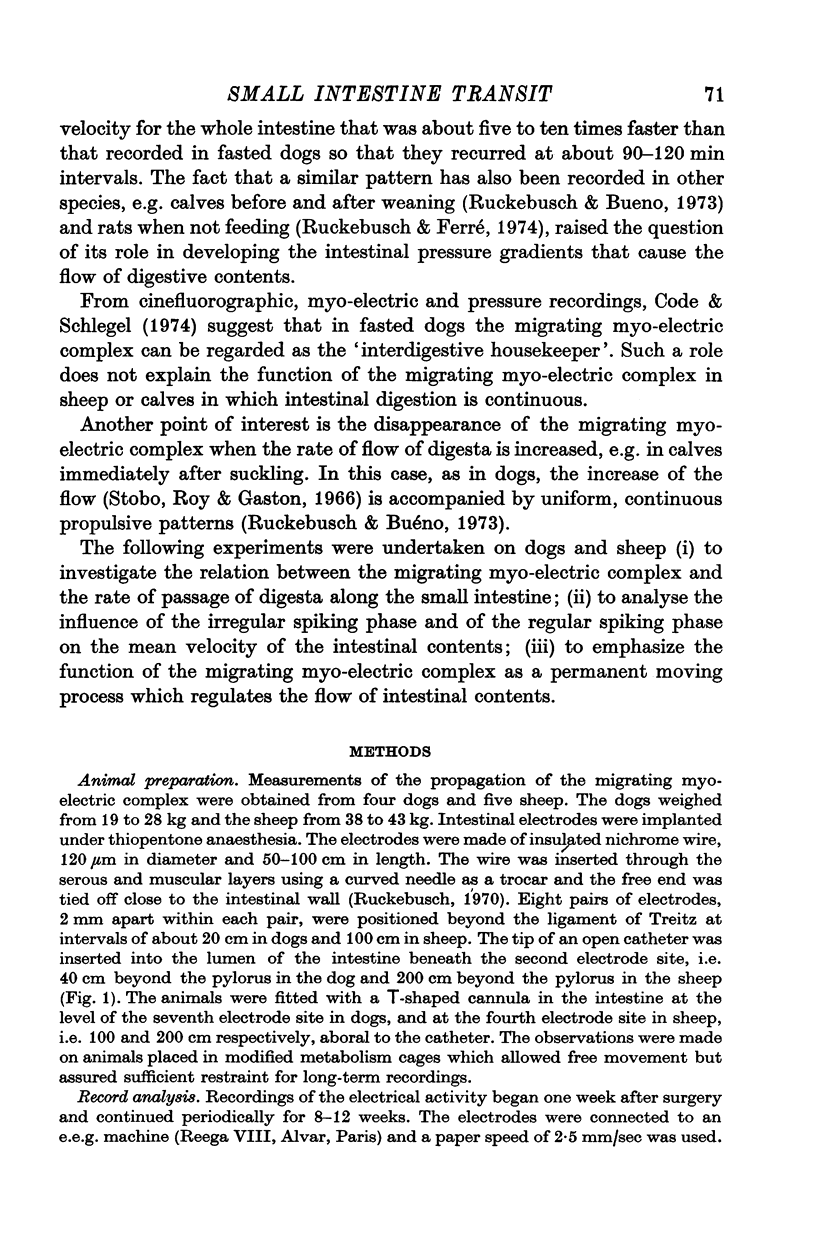

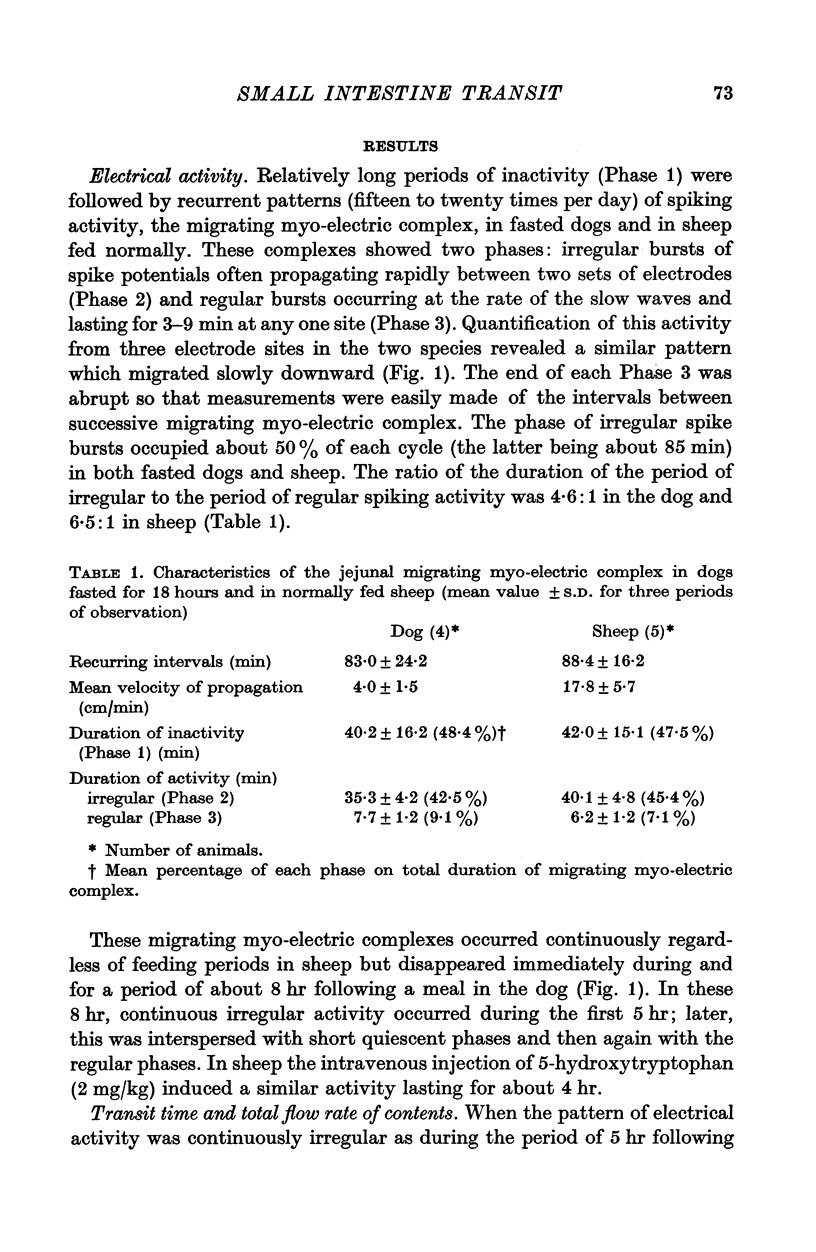
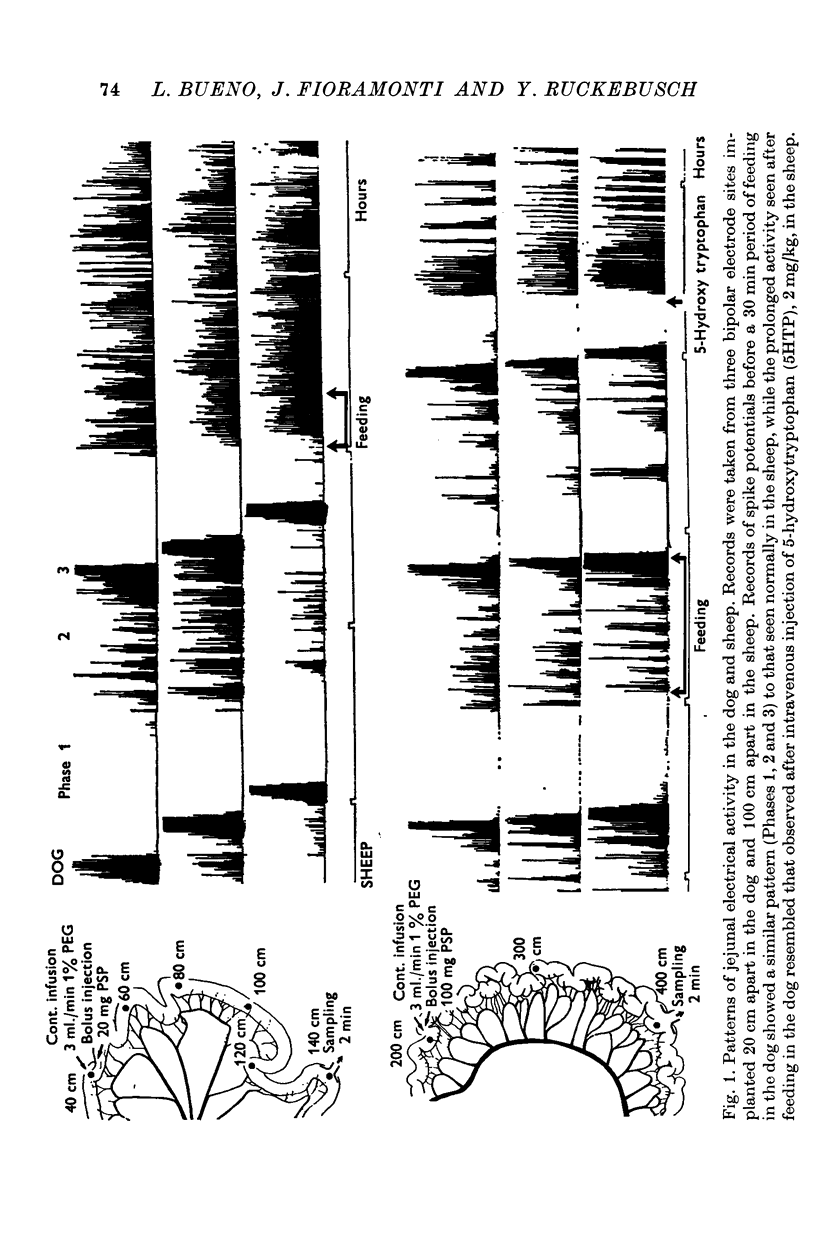
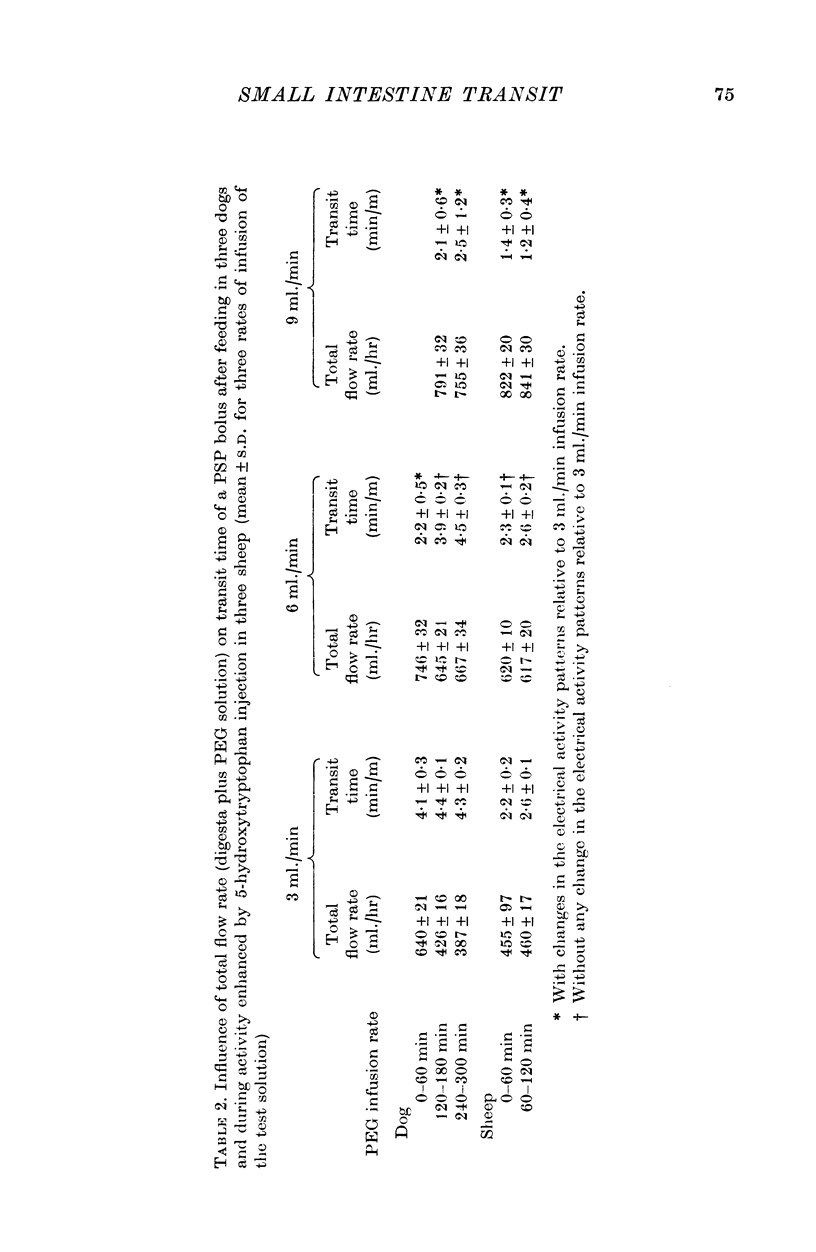
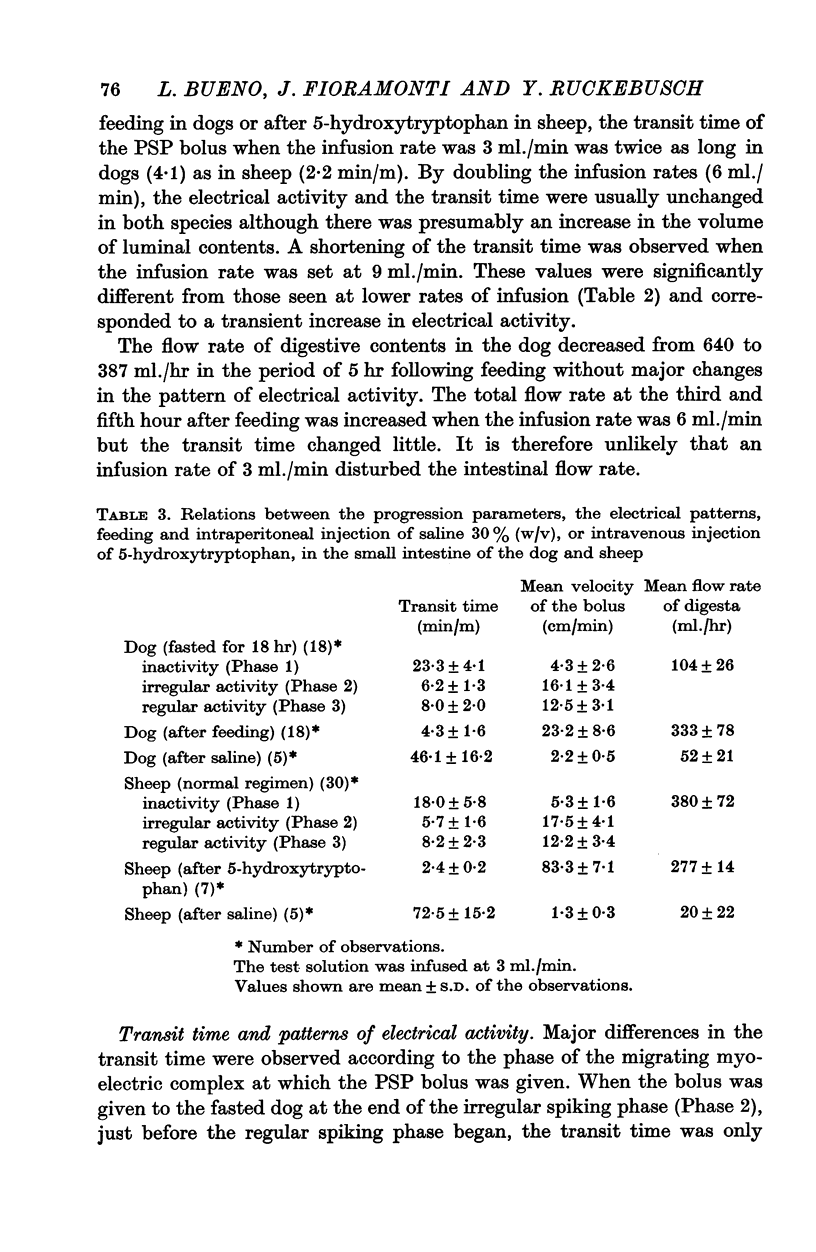


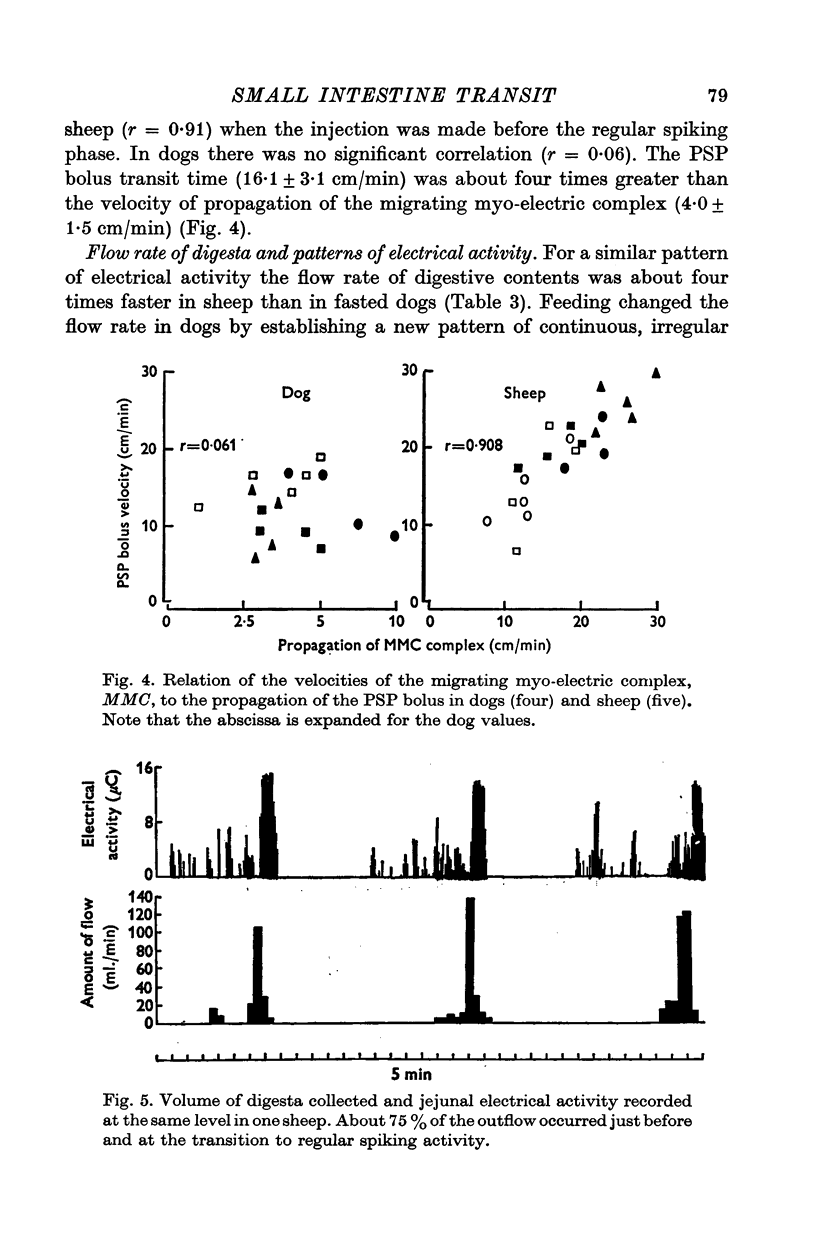
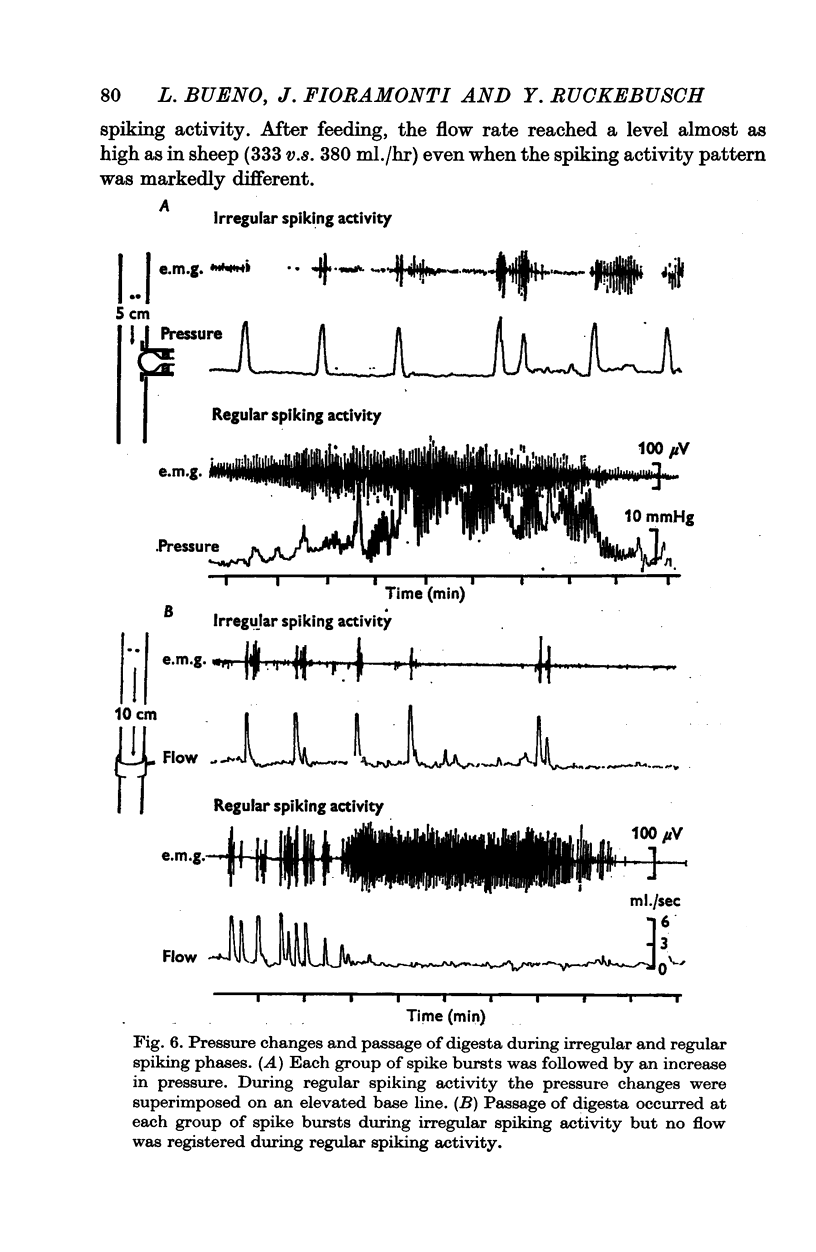
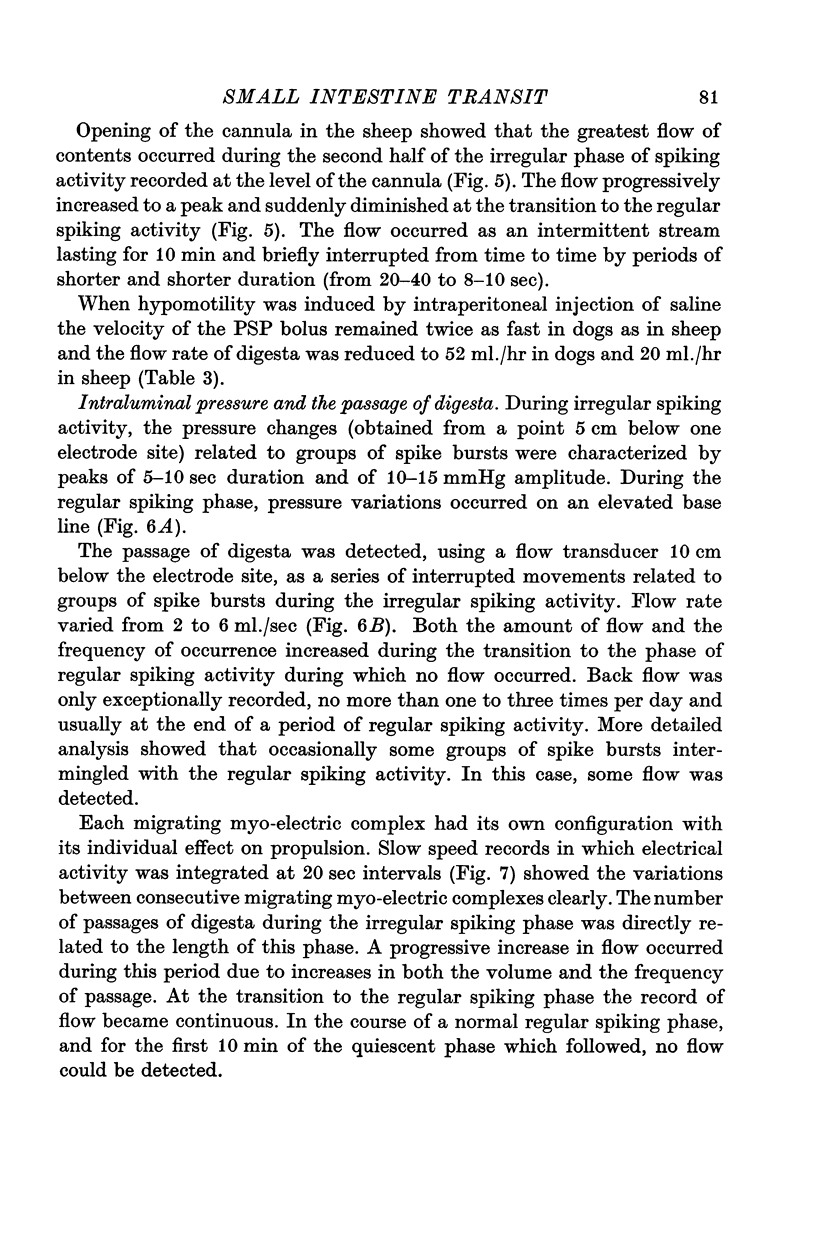

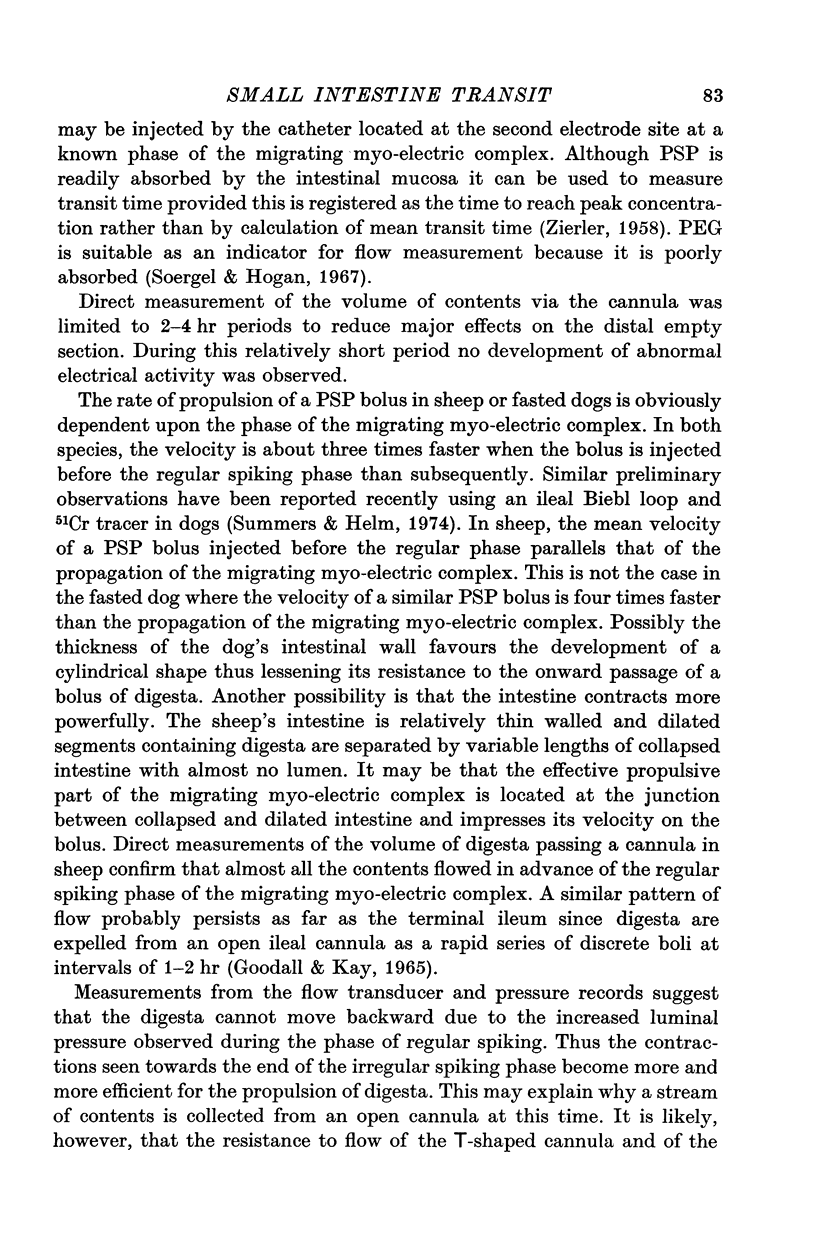
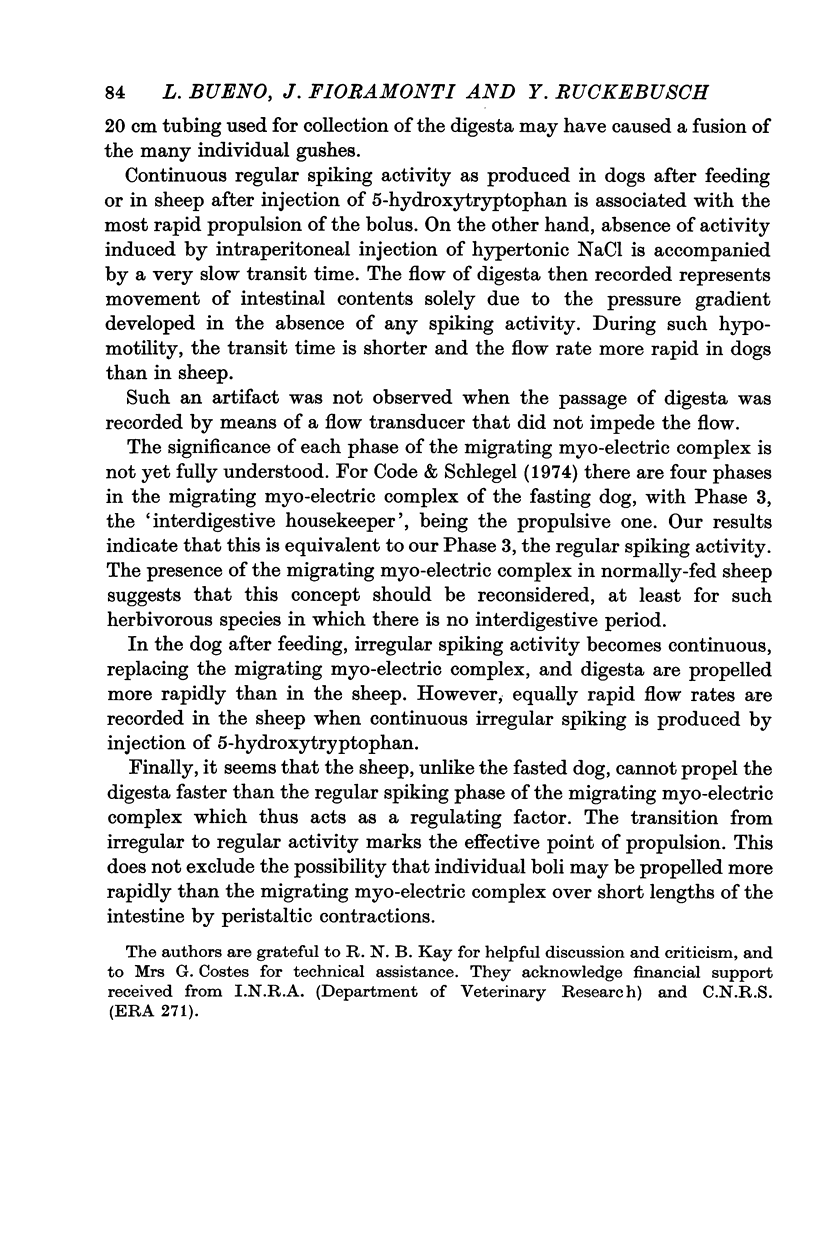

Selected References
These references are in PubMed. This may not be the complete list of references from this article.
- Barreiro M. A., McKenna R. D., Beck I. T. Determination of transit time in the human jejunum by the single-injection indicator-dilution technic. Am J Dig Dis. 1968 Mar;13(3):222–233. doi: 10.1007/BF02236597. [DOI] [PubMed] [Google Scholar]
- GOODALL E. D., KAY R. N. DIGESTION AND ABSORPTION IN THE LARGE INTESTINE OF THE SHEEP. J Physiol. 1965 Jan;176:12–23. doi: 10.1113/jphysiol.1965.sp007531. [DOI] [PMC free article] [PubMed] [Google Scholar]
- Grivel M. L., Ruckebusch Y. The propagation of segmental contractions along the small intestine. J Physiol. 1972 Dec;227(2):611–625. doi: 10.1113/jphysiol.1972.sp010050. [DOI] [PMC free article] [PubMed] [Google Scholar]
- HARRISON F. A., HILL K. J. Digestive secretions and the flow of digesta along the duodenum of the sheep. J Physiol. 1962 Jul;162:225–243. doi: 10.1113/jphysiol.1962.sp006928. [DOI] [PMC free article] [PubMed] [Google Scholar]
- HOGAN J. P., PHILLIPSON A. T. The rate of flow of digesta and their removal along the digestive tract of the sheep. Br J Nutr. 1960;14:147–156. doi: 10.1079/bjn19600021. [DOI] [PubMed] [Google Scholar]
- Ruckebusch M., Ferre J. P. Origine alimentaire des variations nycthémérales de l'activité électrique de l'intestin grêle chez le rat. C R Seances Soc Biol Fil. 1973;167(12):2005–2009. [PubMed] [Google Scholar]
- Ruckebusch Y., Bueno L. The effect of weaning on the motility of the small intestine in the calf. Br J Nutr. 1973 Nov;30(3):491–499. doi: 10.1079/bjn19730055. [DOI] [PubMed] [Google Scholar]
- Ruckebusch Y. The electrical activity of the digestive tract of the sheep as an indication of the mechanical events in various regions. J Physiol. 1970 Nov;210(4):857–882. doi: 10.1113/jphysiol.1970.sp009246. [DOI] [PMC free article] [PubMed] [Google Scholar]
- SMITH R. H. PASSAGE OF DIGESTA THROUGH THE CALF ABOMASUM AND SMALL INTESTINE. J Physiol. 1964 Aug;172:305–320. doi: 10.1113/jphysiol.1964.sp007419. [DOI] [PMC free article] [PubMed] [Google Scholar]
- Soergel K. H., Hogan W. J. On the suitability of poorly absorbed markers as dilution indicators in the gastrointestinal tract. Gastroenterology. 1967 Jun;52(6):1056–1057. [PubMed] [Google Scholar]
- Stobo I. J., Roy J. H., Gaston H. J. Rumen development in the calf. 1. The effect of diets containing different proportions of concentrates to hay on rumen development. Br J Nutr. 1966;20(2):171–188. doi: 10.1079/bjn19660021. [DOI] [PubMed] [Google Scholar]
- Szurszewski J. H. A migrating electric complex of canine small intestine. Am J Physiol. 1969 Dec;217(6):1757–1763. doi: 10.1152/ajplegacy.1969.217.6.1757. [DOI] [PubMed] [Google Scholar]
- ZIERLER K. L. A simplified explanation of the theory of indicator-dilution for measurement of fluid flow and volume and other distributive phenomena. Bull Johns Hopkins Hosp. 1958 Oct;103(4):199–217. [PubMed] [Google Scholar]


